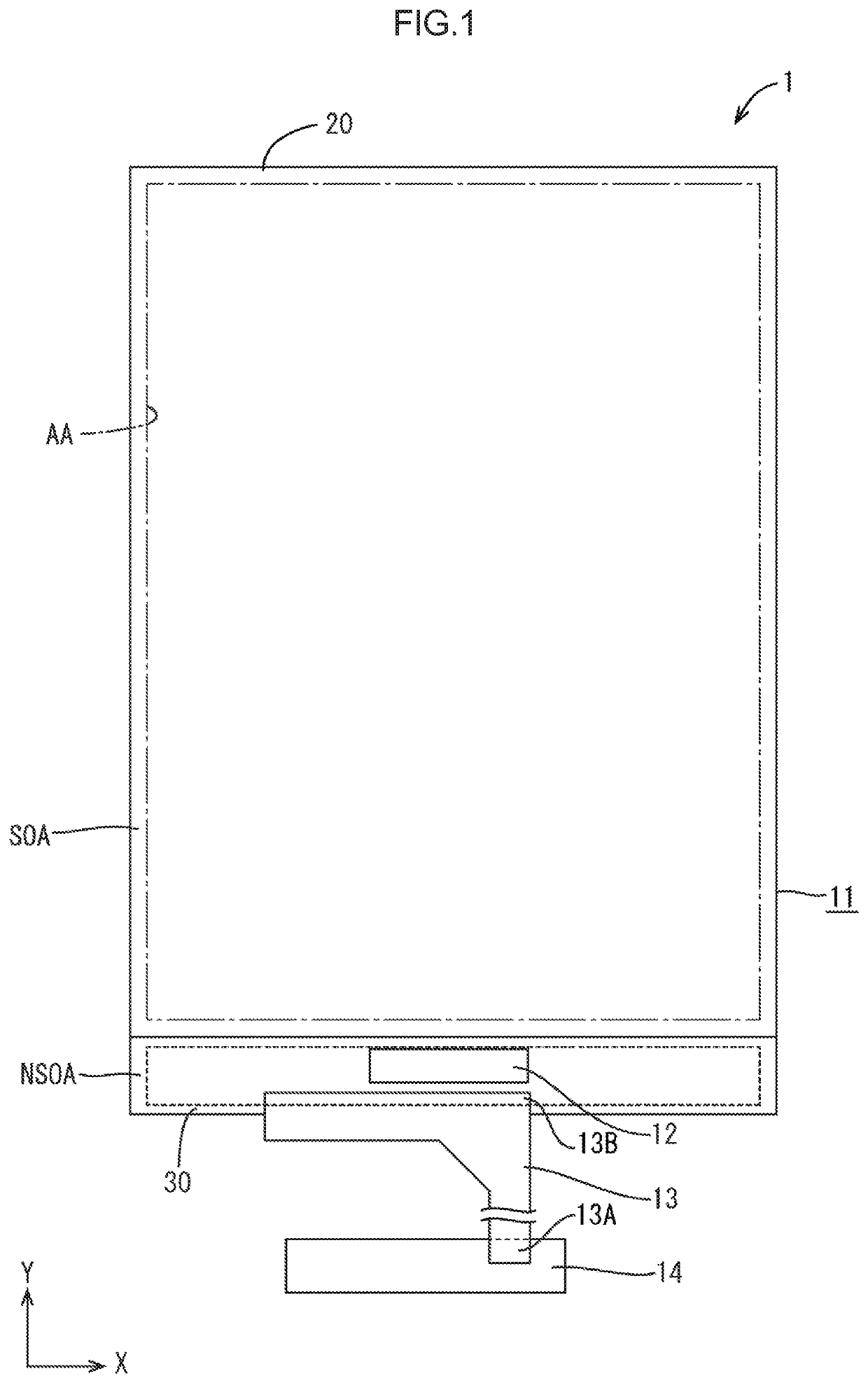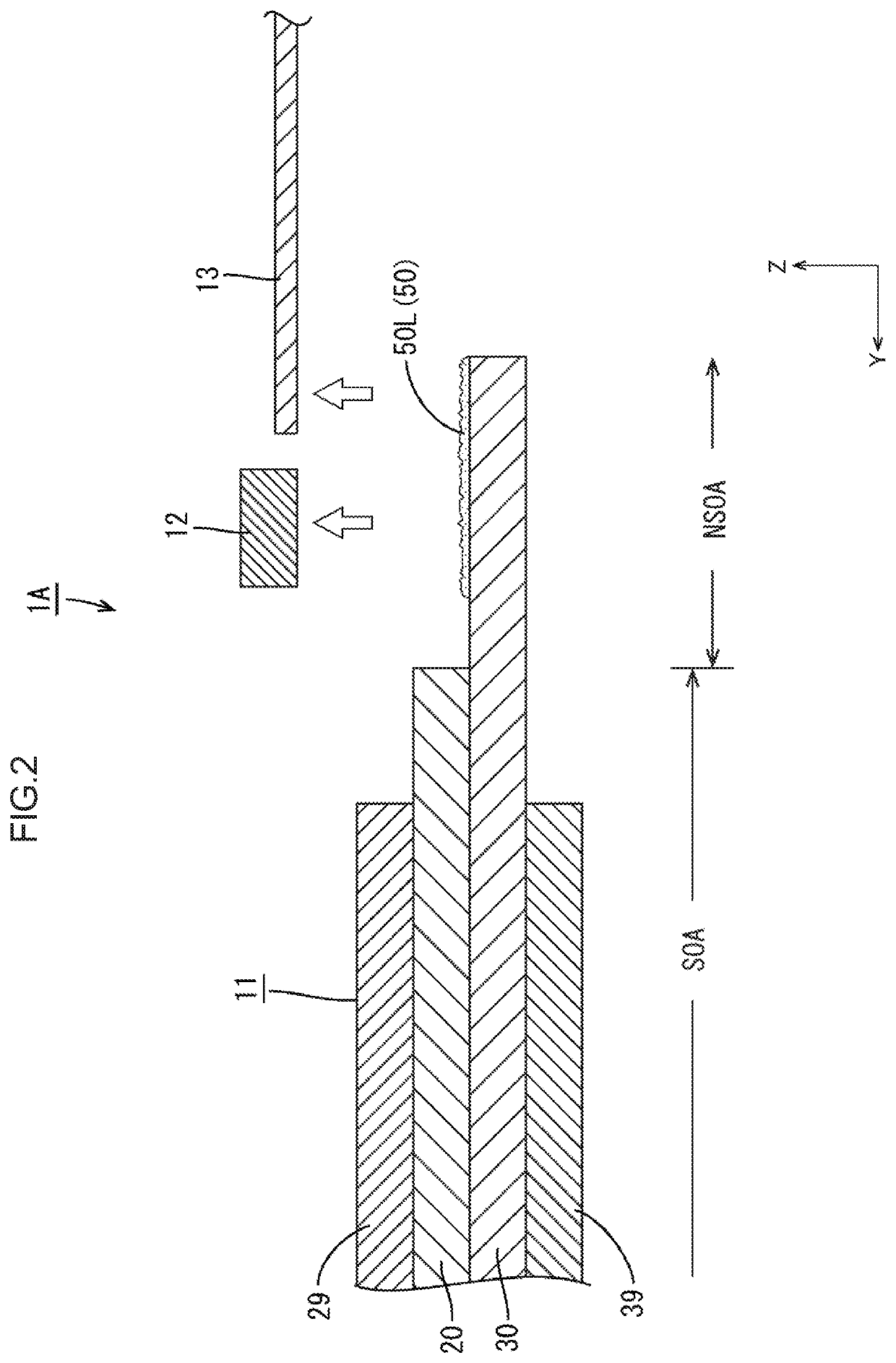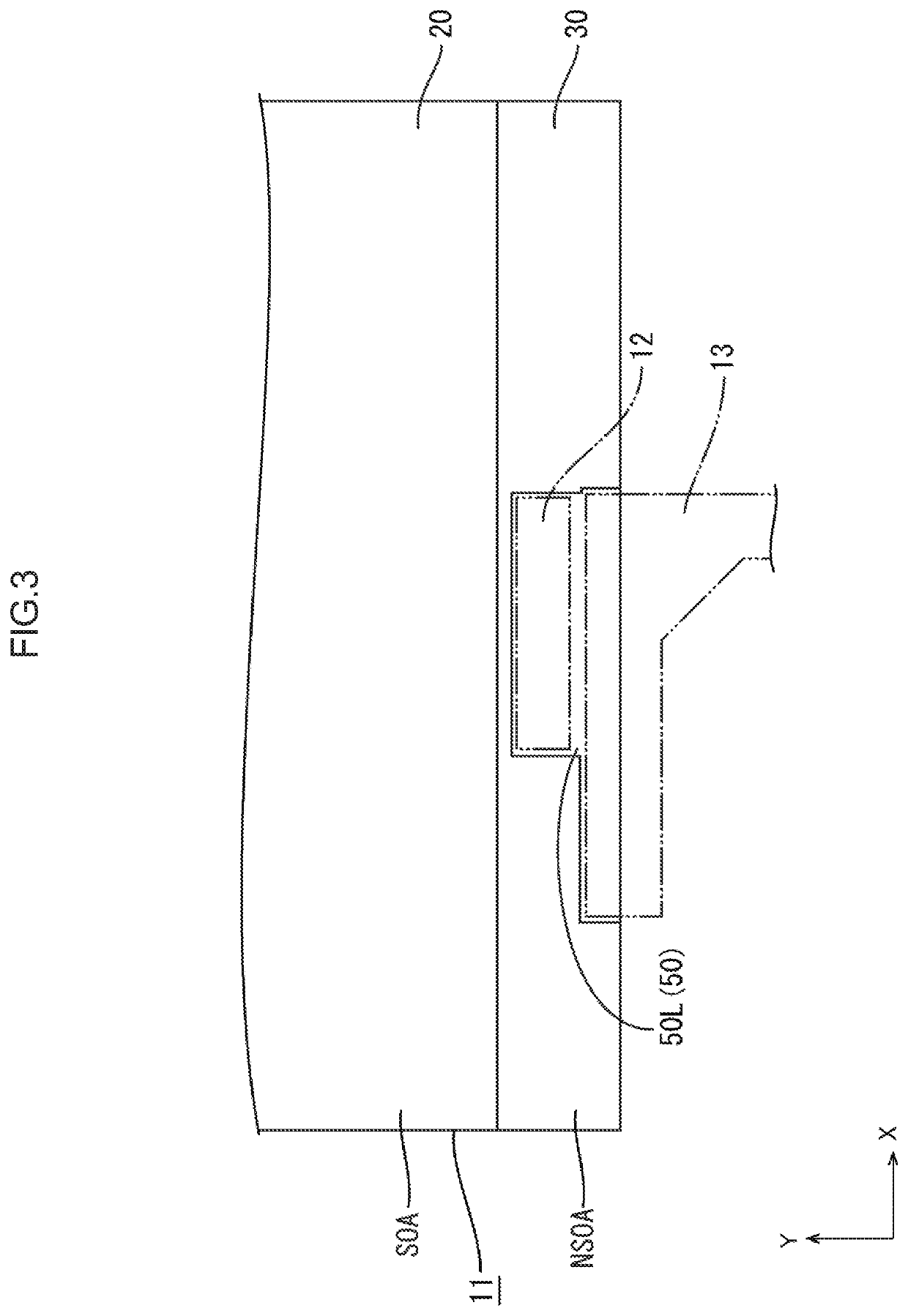Residual layer removal method, residual layer removal device, and display module
- Summary
- Abstract
- Description
- Claims
- Application Information
AI Technical Summary
Benefits of technology
Problems solved by technology
Method used
Image
Examples
first embodiment
[0034]A first embodiment will be described with reference to FIGS. 1 to 10A and 10B.
[0035]In the present embodiment, removal of an anisotropic conductive adhesive (ACF) residual layer from an array substrate constituting a liquid crystal panel (an example of a display panel) of a liquid crystal module (an example of a display module) is exemplified. Note that an X axis, a Y axis, and a Z axis are shown in some of the drawings, and each axis direction is drawn to be a direction shown in each drawing. In addition, an upper side in FIG. 1 is referred to as an upper side (a lower side in FIG. 1 is referred to as a lower side), a right side in FIG. 1 s referred to as a right side (a left side in FIG. 1 is referred to as a left side), a front side of a paper is referred to as a front side (a back side of the paper is referred to as a back side), and reference numerals may be given to some of members that are the same as each other and may be omitted for the other members.
[0036]As shown in...
second embodiment
[0105]A second embodiment will be described with reference to FIG. 11. In the second. embodiment, a structure of a metal mesh is different from that of the first embodiment. Hereinafter, an overlapping description of the same configuration, action, and effect as those of the first embodiment described above will be omitted (the same applies to a third embodiment).
[0106]FIG. 11 is a view schematically showing a cross-sectional configuration of a metal mesh 260 according to the second embodiment together with a cross section of a residual layer 250L that is a target to be removed. The metal mesh 260 according to the second embodiment is a multilayer planar body in which a structure in which metal wires 260B are knitted is formed in multiple layers. The metal wires 260B forming the metal mesh 260 used in the present embodiment have a diameter d smaller than an average layer thickness 1 of the residual layer 250L (d≤1).
[0107]According to the configuration of the second embodiment, since...
third embodiment
[0108]A third embodiment will be described with reference to FIG. 12. Also in the third embodiment, a structure of a metal mesh is different from that of the first embodiment.
[0109]FIG. 12 is a view schematically showing a cross-sectional configuration of a metal mesh 360 according to a third embodiment. In the metal mesh 360 according to the present embodiment, at least parts of surfaces of open holes 360A, that is, outer peripheral surfaces of metal wires 360B are covered with the same resin as that of a residual layer 350L formed of an ACF 350, that is, the ACF 350. Note that a resin having surface energy close to an adhesive resin, such as a resin containing the same kind of functional group as that of the adhesive resin, can be used as a covering resin having an excellent affinity with the adhesive resin. In addition, as the metal mesh 360, a metal mesh 360 in which the metal wires 60B are coated with the ACF 350 can be used. Alternatively, a resin film may be inserted into the...
PUM
 Login to View More
Login to View More Abstract
Description
Claims
Application Information
 Login to View More
Login to View More - R&D
- Intellectual Property
- Life Sciences
- Materials
- Tech Scout
- Unparalleled Data Quality
- Higher Quality Content
- 60% Fewer Hallucinations
Browse by: Latest US Patents, China's latest patents, Technical Efficacy Thesaurus, Application Domain, Technology Topic, Popular Technical Reports.
© 2025 PatSnap. All rights reserved.Legal|Privacy policy|Modern Slavery Act Transparency Statement|Sitemap|About US| Contact US: help@patsnap.com



